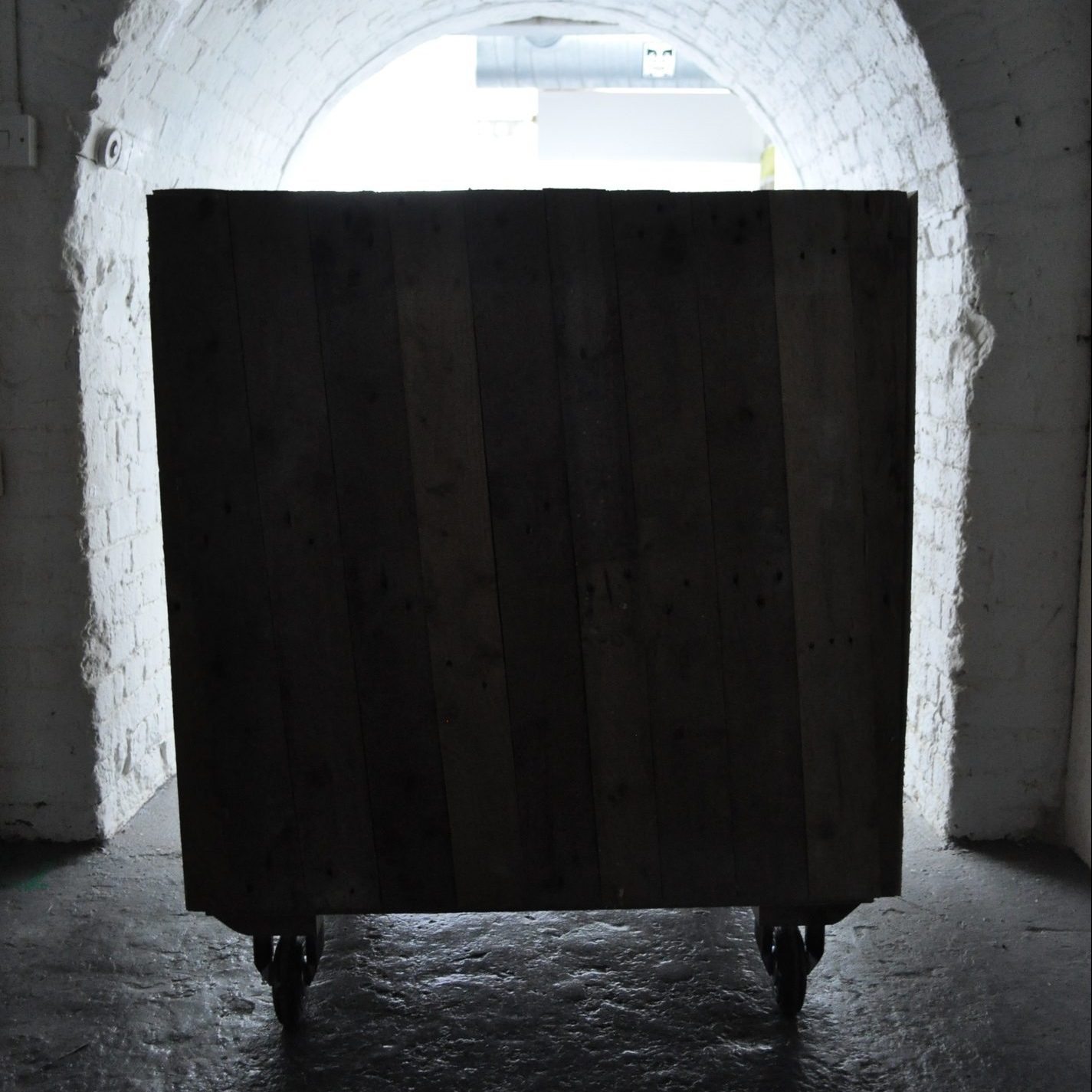
04 Nov Nothingness Part 1 – The Cube
I’m interested in the notion of Nothing, and what nothing is? I imagine that when I look into darkness or pure black, the absence of light is the boundary of the universe, creating a memory of what it was like before Being.
In his book Science of Logic, the philosopher Hegel describes the notion of Being as the indeterminate immediate, free in relation to essence and equal only to itself. This reflectionless being is being as it is in fact nothing, and neither more nor less than nothing.
I’m exploring the feeling and embodiment of this within my art practice, asking the questions are nothing and being an inseparable whole?
I’ve started this enquiry by creating a project titled: Nothing is Immediate. I’m building a series sculptures based on the five regular Platonic solids to explore Nothing and the illusion of infinite. The forms of the three dimensional Platonic solids are understood in science and attributed to the Greek Philosopher Plato, to be the physical and mathematical measurements that underlie observable reality in the whole Universe. In his treatise titled Timaeus, Plato actually chose to constitute each of these solids from right triangles, which played the role of the “sub-atomic particles” to which he expounded a complete “theory of everything”.
The idea that all the constituents of nature consist of mixtures of a small number of “elements”, and in particular the selection of the four elements of earth, water, air, and fire, is attributed to an earlier Greek philosopher Empedocles of Agrigentum (495-435 BC). Empedocles believed that although these elements (which he called “the roots of all things”) could be mixed together in various proportions, the elements themselves were inviolable, and could never be changed.
“Let us assign the cube to earth, for it is the most immobile of the four bodies and most retentive of shape”. Plato
The Cube, a geometric sound sculpture constructed from reclaimed pallet wood, has a space within painted with Black 2.0 acrylic paint. To occupy the space offers a detachment from a bodily experience and a connection to internal bodily consciousness. Thus simultaneously experiencing both nothing and being.

My interpretation of what Hegel describes is that Nothing is simply equality with itself, complete emptiness, absence of all determination and content. In so far as intuiting or thinking can be mentioned here, it counts as a distinction whether something or nothing is intuited or thought.
To intuit or think nothing has, therefore, a meaning; both are distinguished and thus nothing is (exists) in our intuiting or thinking; or rather it is empty intuition and thought itself, and the same empty intuition or thought as being.
Nothing is therefore, the same determination, or rather absence of determination, and thus altogether the same as, pure being.
Being and Nothing are distinct yet inseparable, passing over each other so that each immediately vanishes onto its opposite. Their truth is therefore becoming a difference which has equally immediately resolved itself.
This triadic development can be summarised as: Being + Nothing = Becoming
The title of my project Nothing is Immediate can be broken down into Nothing and Being are the same and equate to Becoming. Jean-Paul Sartre contends that nothingness relates to free consciousness and spontaneity. The ‘is’ relates to the limit and Immediate is now, the present now in space, time and geography.
Therefore, the translation of Nothing is Immediate is close to Free consciousness and spontaneity happens in the present moment, it is limited to now.



David
Posted at 18:17h, 04 NovemberI think the equation is the wrong way round and a little longer. Nothing+being+becoming = nothing surely we come from nothing and then go back to it more of a cycle than a sum. But then everyone will look at this from there own perspective and experiences and beliefs.